Mesmerizing, multi-colored Morocco
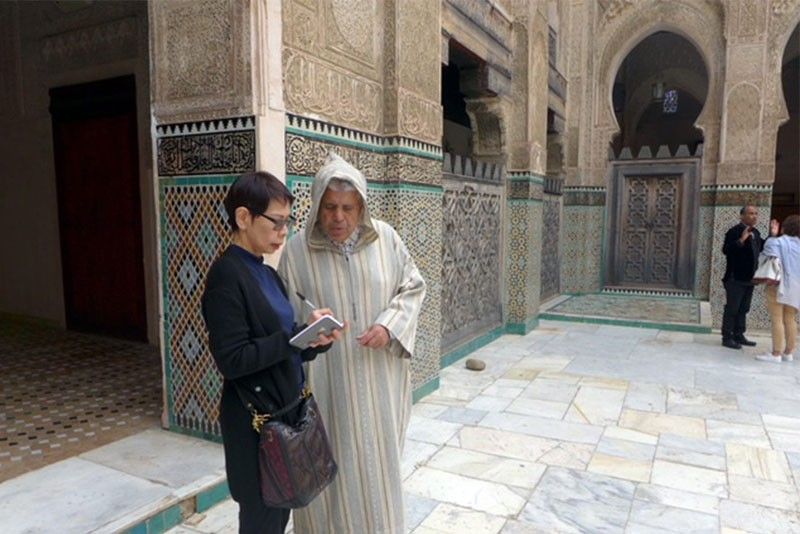
A cornucopia of colors surrounds all five senses. Spices greet the eyes and shoot up one’s nose — cumin, paprika, turmeric, dried ginger. Tagines of lamb, chicken, beef with couscous and vegetables are a staple and served in all the restaurants. Tanners display natural colors used to dye hides from sheep, goat, cow and camel — red poppy flowers, brown cedar wood, orange henna — cleaned with white limestone and pigeon droppings. The strong smell of leather jackets, slippers, totes, leather footstools seduces passersby to buy souvenirs. (Bargaining is a standard, expected practice for every purchase.)
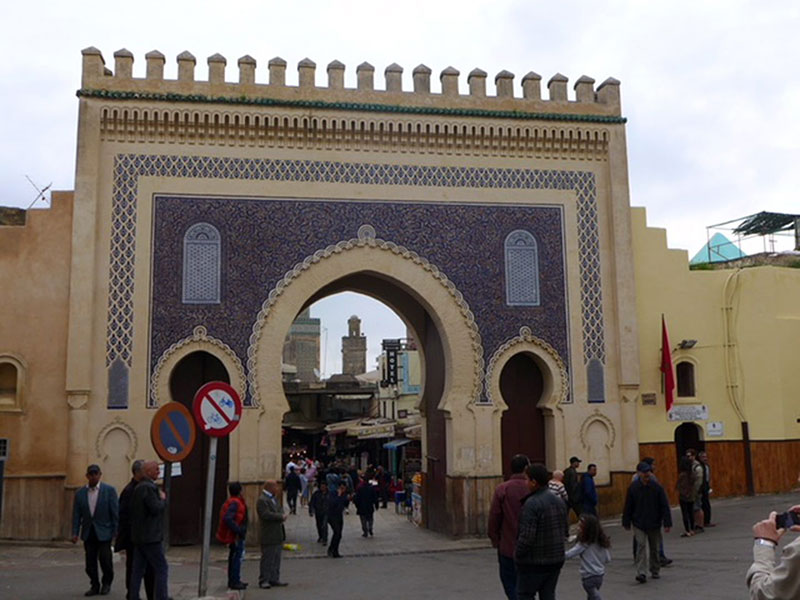
The blue gate built in the 12th century and the symbol of the Fes medina. Inside the walls are 300 mosques, palaces and mansions, tanneries, carpet sellers, universities, and hammam baths. There are eight such gates in Fes.
Agriculture is the largest contributor to the economy of Morocco. Farmers are wealthy and respected — our guide tells us “They feed us!” Indeed, fruits from Morocco are seen in the supermarkets of France. Tourism comes second, with 15 million tourists a year.
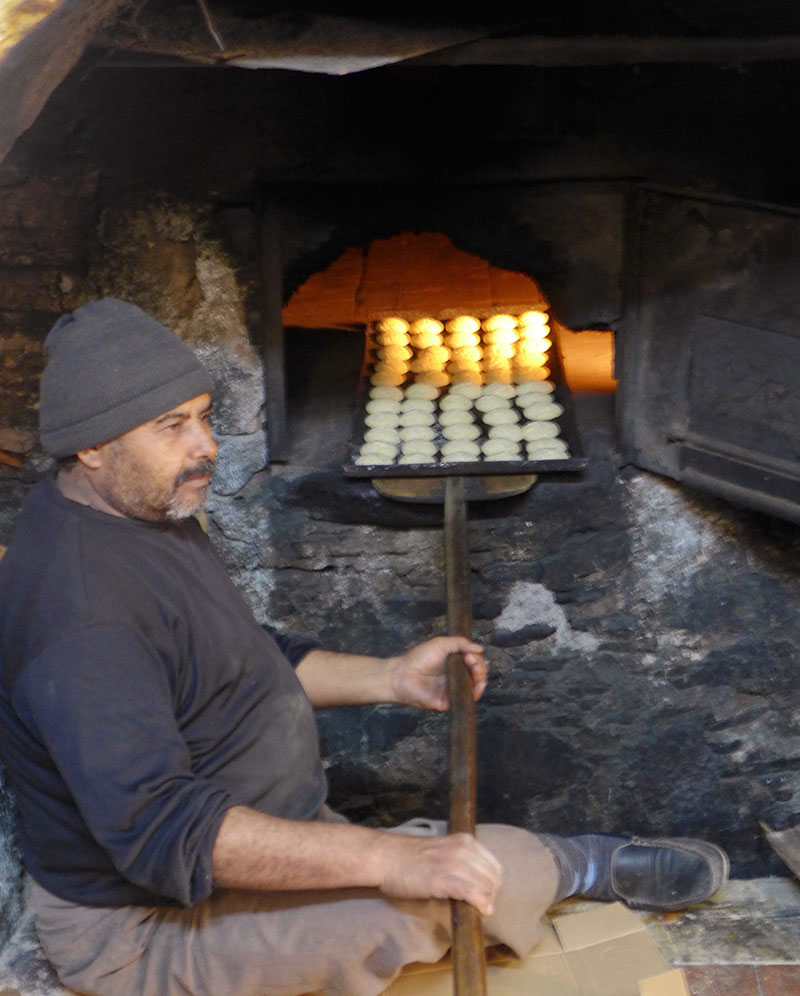
Women in Morocco like to serve freshly-made bread to their family, but they do not have a wood-fire oven. They make their own dough and bring it to the neighborhood baker for freshlybaked bread every morning.
Visitors to the medina (old town) alight from a vehicle to an area similar to our Divisoria, with numerous taxis and motorbikes zipping through labyrinthine alleys. (Pedestrians are warned to stay on the side to avoid unwanted death.) A walk through narrow, winding two-meter wide passageways flanked by tall, thick walls make a first timer slightly nervous, but not for long.
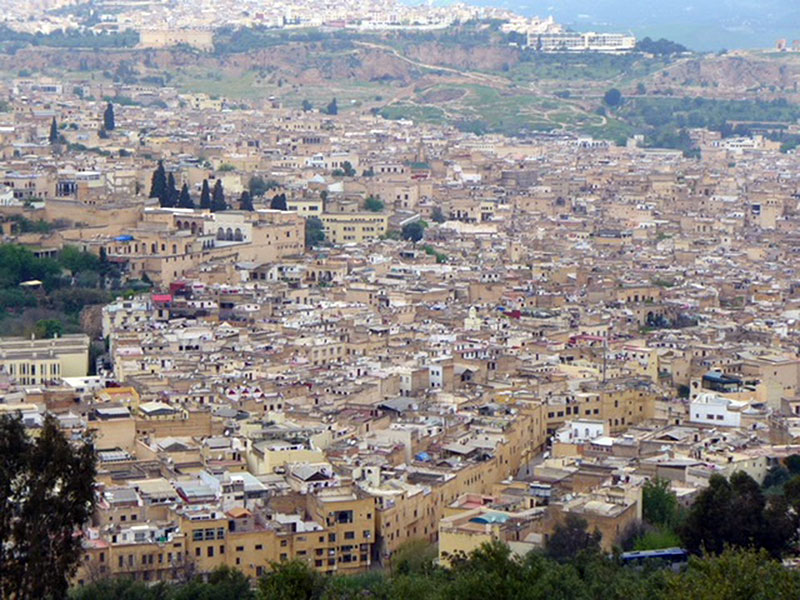
The Fez medina, the former capital of Morocco, is 150 square hectares, as seen from the military outpost, Borj Sud. (The capital is now Rabat.) The Fes River runs underneath the medina. Aside from the old part of the city, the Ville Nouvelle, or New City, built by the French, accommodates the growing affluent population.
Enter a carved wooden door and experience a serene and superlatively beautiful enclave! Tile mosaic walls framed with delicately hand-carved lace-like plaster and cedar wood surround every public and private area of a riad (guest house). One eats, bathes, sleeps and wakes up to colorful patterns from floor to ceiling.
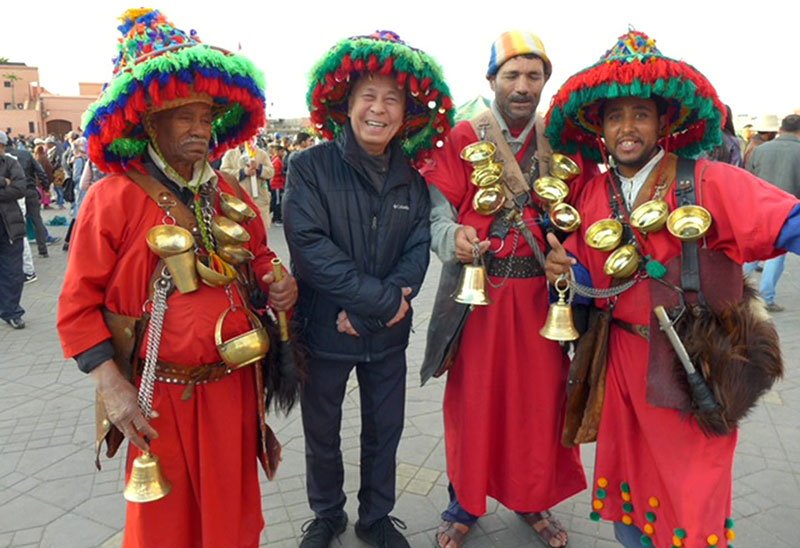
For a few dirhams, three guerrab (traditional water carriers) pose with Mitto Licauco (center). They can be found around the central Jemma El Fna as tourist attractions.
A hammam bath experience is an interesting one. A female staffer (for female guests; a male staffer for male guests) lays a towel on the marble floor and tells the guest to lie prone on it. She fills a brass bowl with hot water, pours it on the body. She shampoos the hair, and soaps the body with black olive soap. With strong, firm hands (she’s a rather large lady), she then exfoliates the skin with scrub gloves and lava clay, and rinses, leaving the skin all tingly and aglow. A massage is a soothing ending. We were told that local ladies partake of this hammam bath once a week.
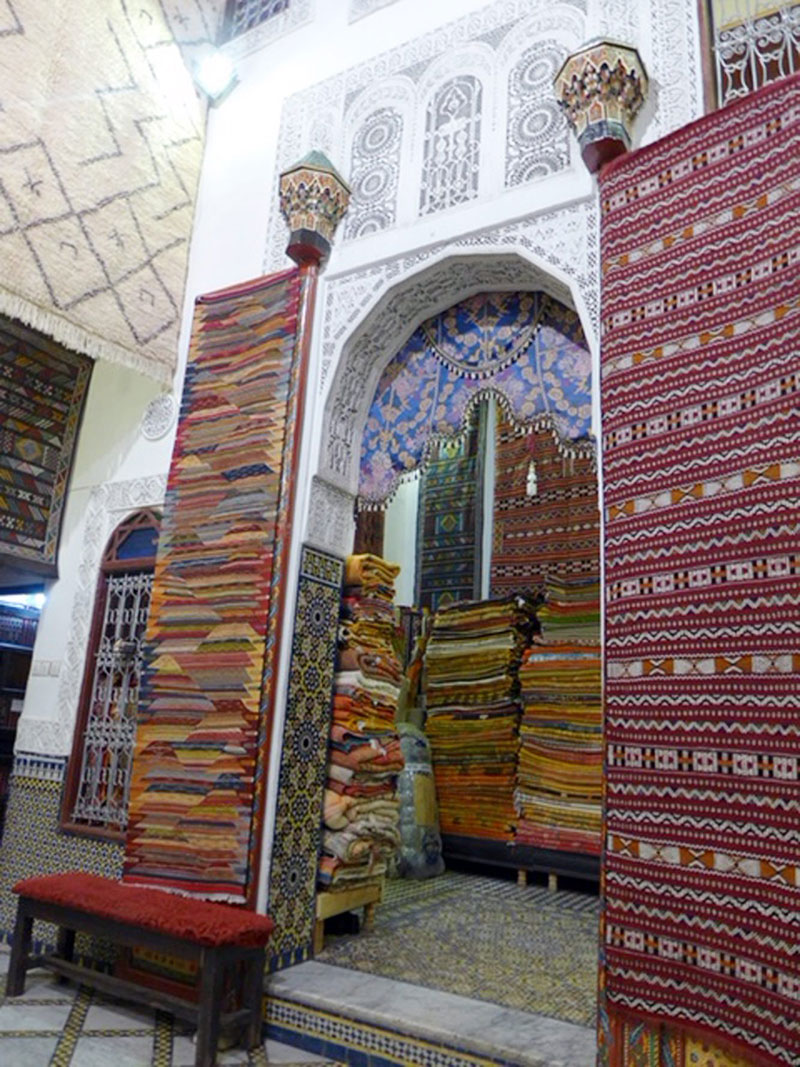
Weaving cooperatives give the opportunity for weavers in the countryside to continue with their indigenous weaving techniques. This carpet store can fold a large rug into a size small enough to take home. A twostory temple of temptation.
Our road trip to Fes and Marrakech, with a brief lunch at a restaurant on the fishing port of Casablanca, was enough to leave a nice taste in the mouth. An excellent highway passes through green, rolling hills, bulging with crops and sheep. The citizens speak both Arabic and French. In 1911, Morocco became a protectorate of France until 1956.
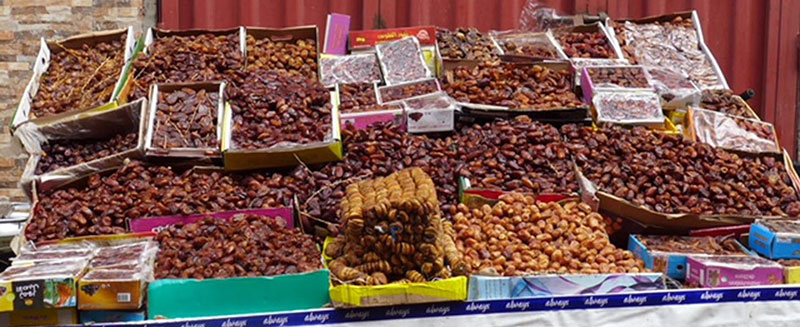
Figs, figs, figs! Similar displays of sweets, nuts and fruit are in the medina.
Fes was founded in the 8th century and is the second largest city next to Casablanca, with a population of 1.25 million. Their king, Mohammed VI, is from the Alaouite dynasty, which has been ruling Morocco since the 17th century. He has a palace in every important city, and the palace in Fez is on a 80-hectare property.
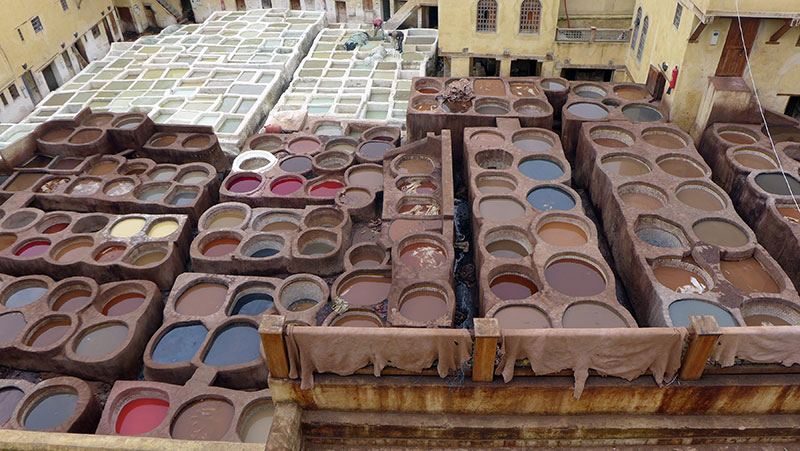
The Chouara Tannery is one of three large tanneries inside the Fes medina. Large vats are used to clean and process hides of sheep, goat, cow and camel with lime, salt, pigeon droppings and bran. Tannins, pomegranate peel, and poppy powder are used to color the hides. Hides are dried under the sun for three weeks.
Fes el Bali (Old Fes) medina, a World Heritage site, is 150 square hectares in size. It has the oldest university in the world, the University of Al-Karaouine, 300 mosques and countless retailers. Normally a medina has three components: the kasbah (administrative area), the mellah (Jewish section; the Jews fled to Morocco to avoid the Spanish Inquisition), and the souk (market). The souk has many cooperatives of jewelers, potters, tanners, carpetweavers and argan, tea and spice traders.
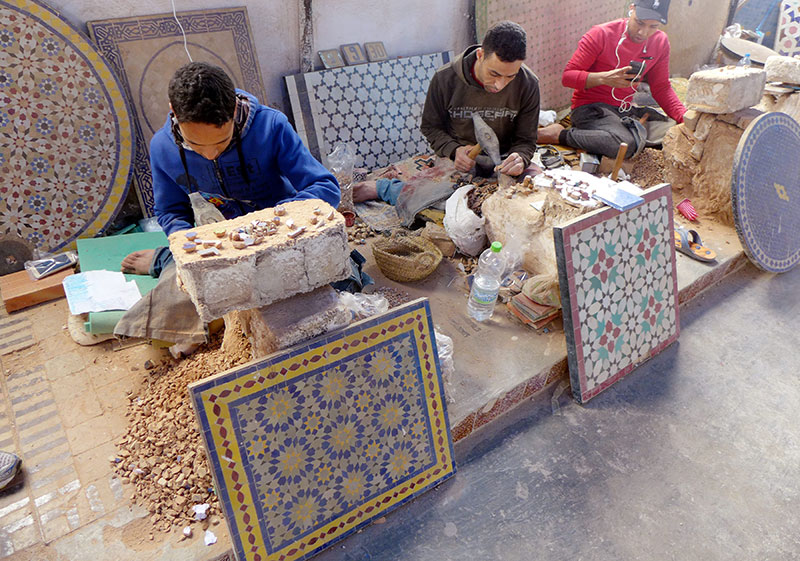
Fes is the center for pottery. Cooperatives use gray clay, which is free of lead and chemicals. The colors are derived from mineral oxides, designed from Arabic, Moorish, Berber or Jewish influences. These are twice-baked in kilns, using leftover olive grounds to feed the fire. The mosaic tiles seen in Moroccan buildings are made in Fes. Every tile is shaped by hand and pieced together like a puzzle. Walls, fountains, tables are painstakingly put together by skilled fingers
No cars are allowed inside the medina, but donkeys are! They must follow traffic signs that say “One Way” or “Do Not Enter.”
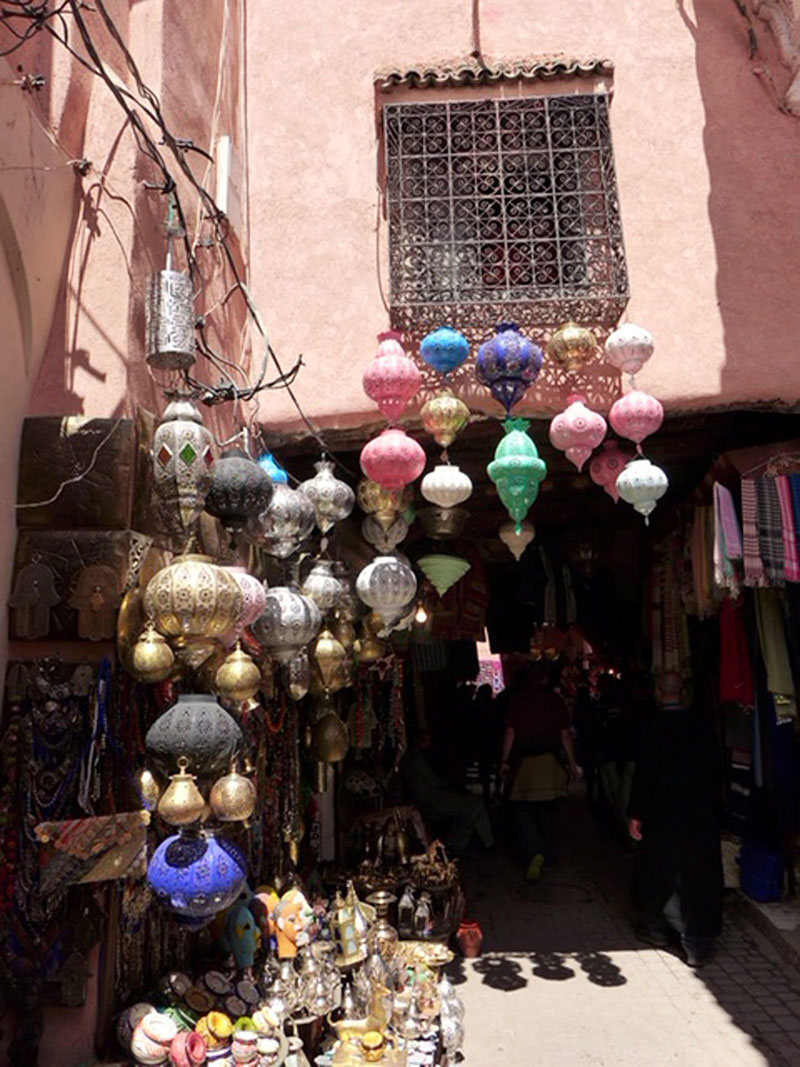
Lace-like detailed brass or silver adorn lamps, screens and teapots.
Morocco is the fourth largest city after Casablanca, Fez and Tangier. It is the “red city,” from the red soil used for buildings, and a city of gardens. The boulevards are lined with orange trees (no one steals the oranges!) and jacaranda. Built in the 12th century, the Menara Gardens offer a water reservoir with 2,000 olive trees that are two centuries old. The Koutoubia Minaret, the symbol of Marrakesh, is 77 meters high and is the tallest structure in the city. (A twin structure exists in Sevilla, Spain.)
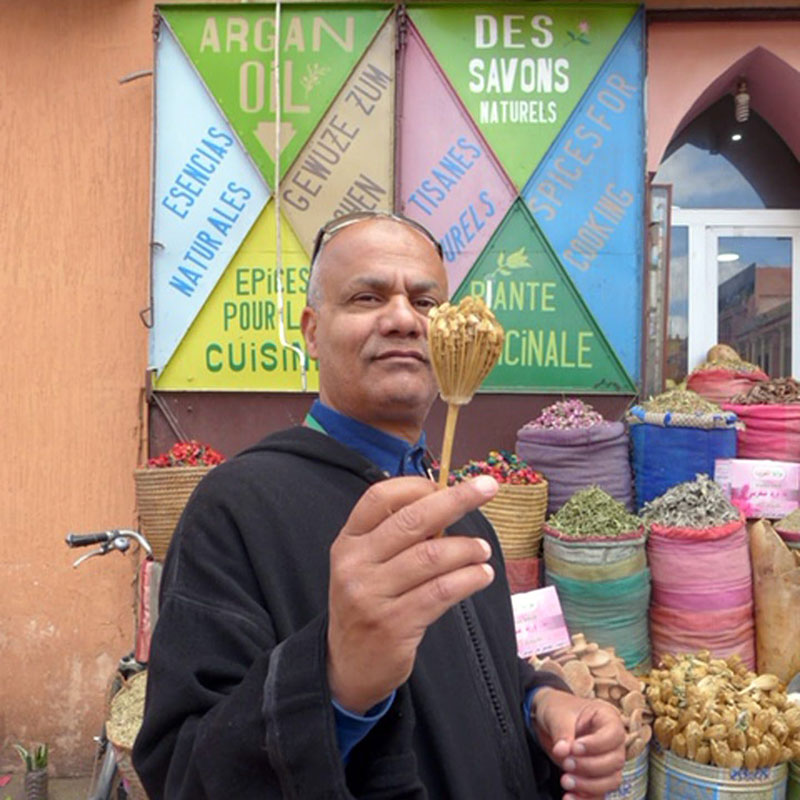
Colors in the Marrakech market. Our guide, Rashid, shows natural toothpicks.
Built by the Berber Empire, the medina is even larger than that of Fez and its maze-like alleys open into a gigantic square, Jemma El Fna.
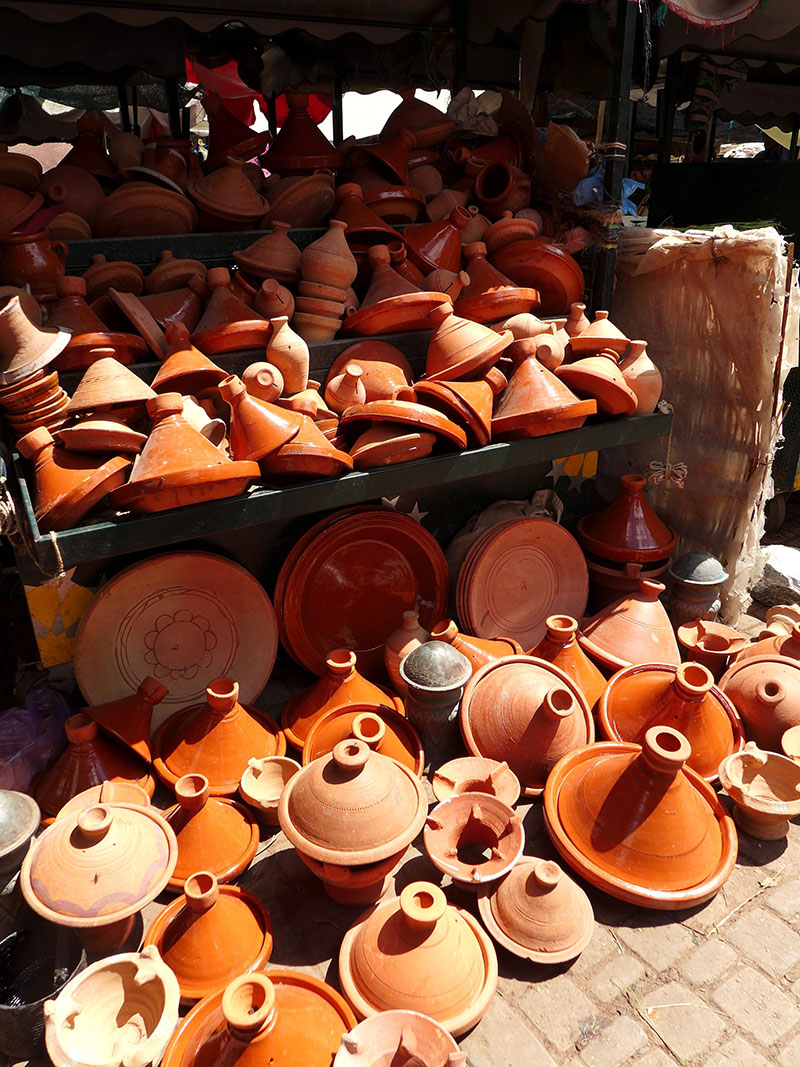
Tagines for sale. The food cooked in this earthenware is also called a tagine: beef, lamb, or chicken cooked with vegetables and spices.
Entertainment happens here every night. The snake charmers play their flute-like pungi (made from a gourd) and make their cobras rise. Belly dancers and magicians mesmerize the onlookers. Food, fruit, tea, spices, sweets are displayed on the ground or in stalls.
And the crowd! People fill up every available space. Tourists and locals alike gather, jostle, push to watch and throw a few dirham coins on the performers’ baskets. (Taking photos also means giving 10 dirham or more.)
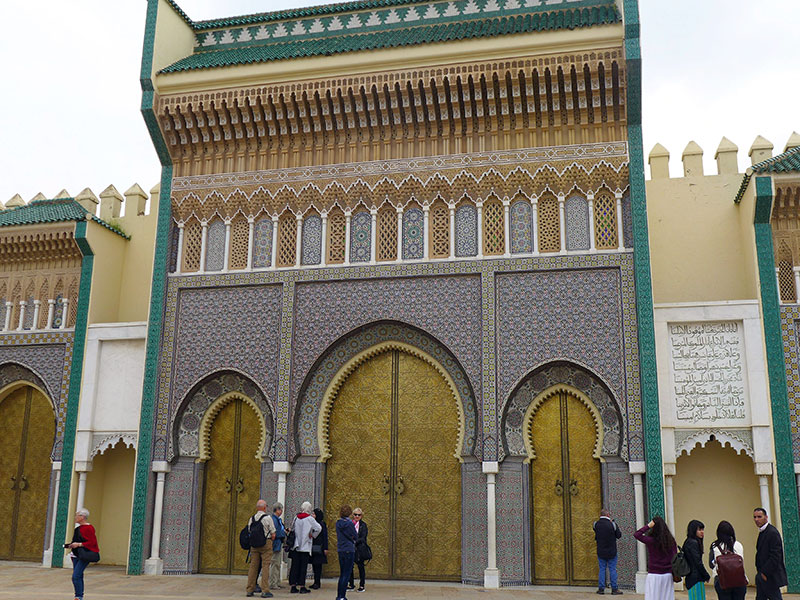
The entrance to the 80-hectare king’s palace in Fes. (The current king, Mohammed VI has a palace in each major city in Morocco.) This gate is only used for VIP visits.
The Bahia Palace, built in 1894, was the nine-hectare home of Si Moussa, a former slave who later became the grand vizier (equivalent to a prime minister) of Hassan I. When the king died suddenly and left his 14-year-old son too young to rule, the grand vizier exercised great power. He built an iconic example of Islamic-Moroccan architecture, which housed his four wives, 200 concubines and their eunuchs. Each room has intricately-decorated ceilings and opens to a central courtyard, where large parties were held. At least, the grand vizier honored his first wife, Bahia (meaning “brilliant”), the mother of his son, by dedicating the place to her.
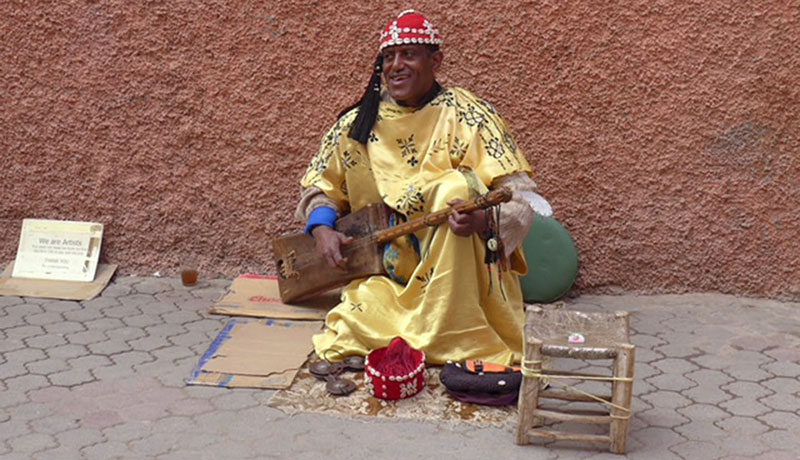
An entertainer playing an old Moroccan musical instrument.
The most-visited place is the lovely Marjorelle Gardens, created by Jacques Majorelle and later rehabilitated by Yves Saint Laurent and his partner, Pierre Bergé. More about it in my next article.

The quintessential snake charmer plays his flute-like pungi and makes his cobra stand. For a few dirhams, one can have a python slither around the neck.
* * *
Tell me where to Walk the Talk: cecilialicauco2@gmail.com Instagram: cecilialicauco2



















